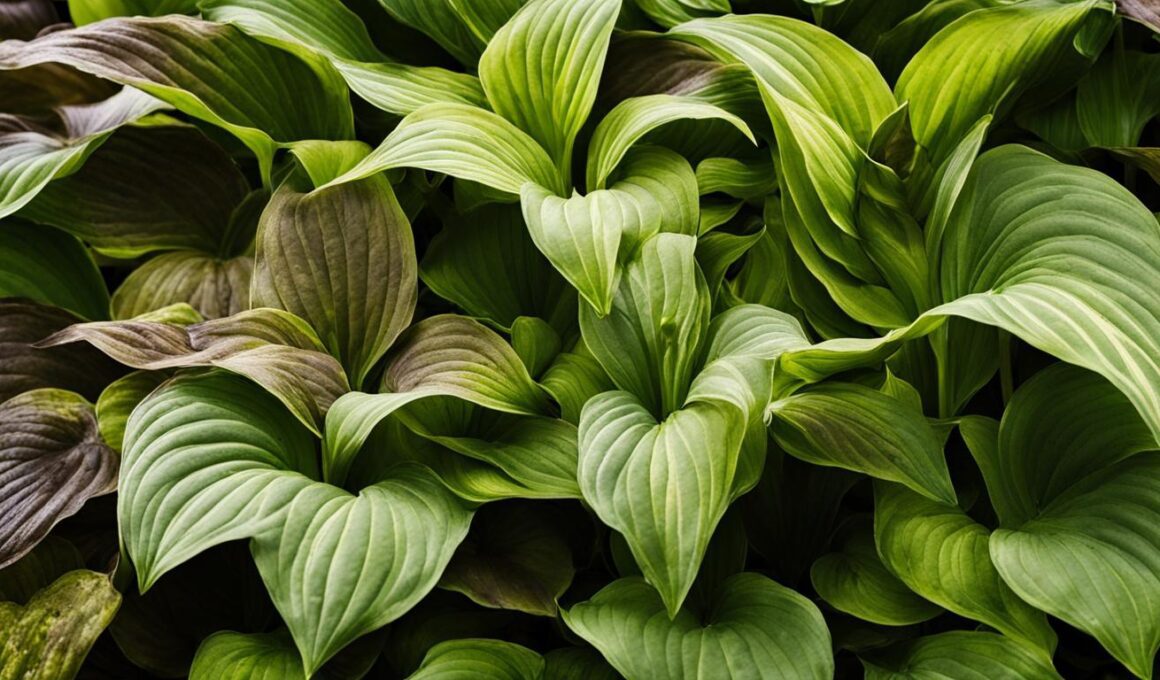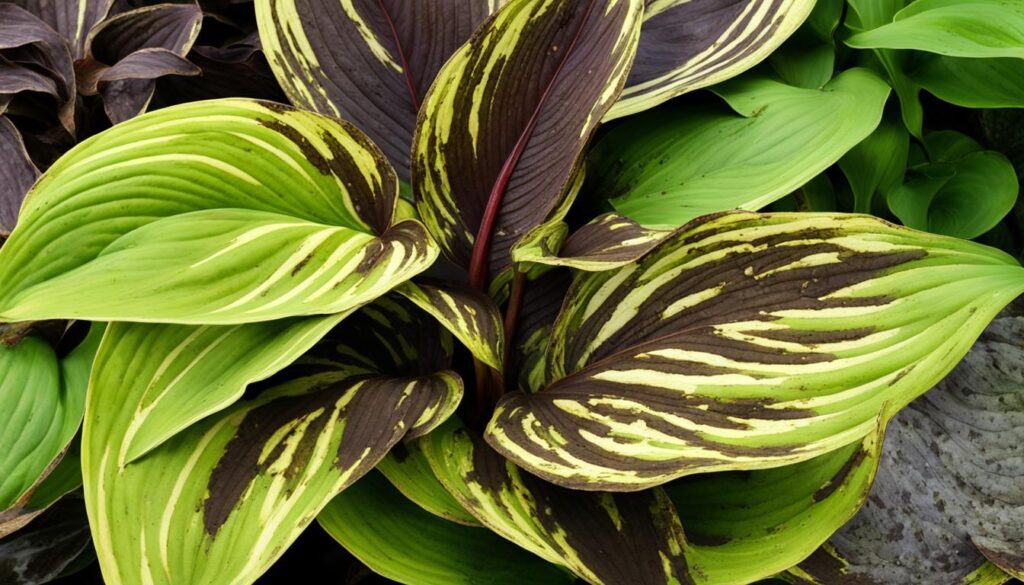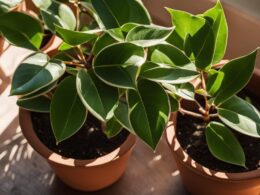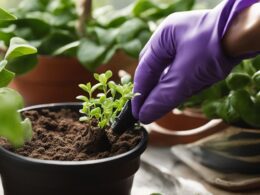If you have noticed your hosta leaves turning brown, don’t panic. It is a common gardening issue that many hosta owners encounter. There are several factors that can contribute to this problem, but with the right care and attention, you can prevent further damage and restore your hostas to their vibrant green state.
One of the main reasons for brown hosta leaves is scorch, which occurs when the plant loses more water than it can absorb. This can happen when temperatures rise or when the plant is exposed to intense sunlight. To prevent brown leaf edges, it is important to grow hostas in shady areas, away from hot mid-day and afternoon sun.
Another helpful tip is to add organic matter to the soil and keep it slightly moist. Organic matter improves the water-holding ability of the plant, ensuring that it receives adequate hydration. Mulching the soil with organic matter can also help in keeping it cool and evenly moist, providing the optimal conditions for hostas to thrive. However, be cautious as mulching can create a favorable environment for slugs, which can be controlled using beer traps or by planting more slug-resistant hosta varieties.
By following these simple steps, you can prevent hosta leaves from turning brown and enjoy a beautiful, healthy garden all season long.
Petiole Rot: A Serious Disease of Hostas
If you are a hosta enthusiast, it is important to be aware of petiole rot, a common and serious disease that can plague your plants. Petiole rot is caused by the fungus Sclerotium rolfsii var. delphinii, and it not only affects hostas but also other perennials such as daylilies, peonies, phlox, and columbines.
The symptoms of petiole rot can be easily identified. Look out for marginal yellowing and browning of the lower leaves, soft brown decay at the base of the petioles, and wilting of the leaves. As the disease progresses, the petioles rot away, causing the leaves to collapse.
The fungus responsible for petiole rot produces small round fungal fruiting structures called sclerotia. In their young stage, these sclerotia are cream in color but turn dark red over time.
To effectively manage petiole rot and protect your hostas, it is crucial to take preventive measures. Before planting, carefully inspect your plants for any signs of the disease. Avoid planting suspect or symptomatic hostas as they can introduce the fungus into your garden.
If you notice any infected plants, it’s important to act swiftly. Remove and destroy the infected plants to prevent the spread of the fungus. Additionally, consider replacing the contaminated soil to eliminate any potential sources of reinfection.
It is also important to avoid moving plants from contaminated beds as this can spread the disease to new areas of your garden.
It’s worth noting that common garden fungicides are not effective against petiole rot. Therefore, prevention and early detection are key in managing this disease.
Preventing Brown Hosta Leaves in August
To prevent hosta leaves from turning brown in August, you need to ensure they have the right growing conditions. Hostas thrive in partial to full shade and can experience leaf browning if exposed to direct sunlight or extreme heat. When selecting a planting location, it’s crucial to avoid areas that receive hot afternoon sun.
Mulching the soil around hostas with shredded leaves, evergreen needles, or other organic matter is an effective way to keep the soil cool and moist. This creates optimal growing conditions and helps prevent brown leaves. However, it’s important to note that mulching can also create a favorable environment for slugs. To control slugs without harming the environment, consider using environmentally friendly slug baits.
Furthermore, watering hostas thoroughly and frequently enough to keep the soil slightly moist can contribute to preventing brown leaves. Regularly monitoring the moisture level of the soil and adjusting your watering schedule accordingly is essential.
Can Brown Hosta Leaves Pose a Threat to Dogs?
Yes, hostas toxicity in dogs is a major concern for pet owners. Brown hosta leaves can contain substances that are toxic to dogs if ingested. Symptoms of poisoning may include vomiting, diarrhea, and lethargy. It’s important to keep a close eye on pets around these plants and seek veterinary care if ingestion is suspected.
Source Links
- https://hortnews.extension.iastate.edu/faq/leaves-several-my-hostas-have-turned-yellow-then-brown-and-finally-collapsed-ground-what-happe
- https://www.melindamyers.com/articles/prevent-scorch-and-brown-leaves-on-hostas
- https://www.melindamyers.com/audio-video/melindas-garden-moment-audio-tips/problems-pests-weeds/leaf-browning-scorch-on-hostas-and-other-shade-plants










